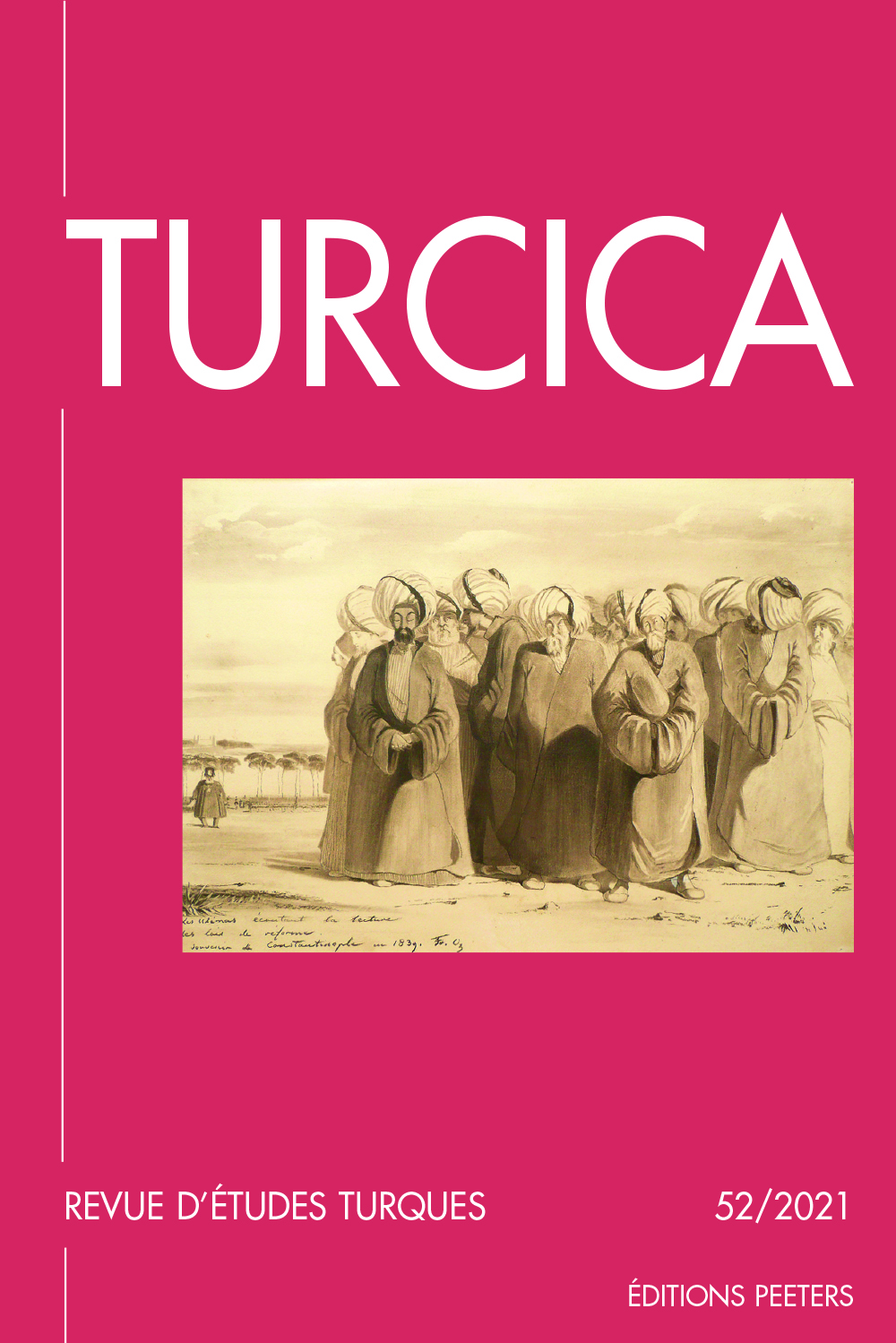 previous article in this issue previous article in this issue | next article in this issue  |

Preview first page |
Document Details : Title: L'Origine des Turcs Author(s): HAMILTON, James Journal: Turcica Volume: 30 Date: 1998 Pages: 255-261 DOI: 10.2143/TURC.30.0.2004300 Abstract : James HAMILTON, L’origine des Turcs Cette étude vise à repérer dans les différentes sources, principalement chinoises et byzantines, les premières apparitions de peuples turcophones, c.-à-d. de langue proto-turco-mongole, proto-turque, ou turque ancienne. Les peuples turcophones reconnaissables le plus anciennement se trouvaient dans la grande confédération des tribus nomades Hiong-nou ou Huns qui parcouraient les déserts et les steppes au nord de la Chine et de l’Asie Centrale entre le IIIesiècle avant notre ère et le IVe siècle après, à savoir les *Tägräk ou “Hauts Chars”, groupe de tribus comprenant les Uygur, devenus plus tard les Oguz, ainsi que les *Qirqun ou *?irqut, appelés plus tard les Qirqiz. Au début de notre ère apparaissent les T’ou-yu-houen, Tuygun ou Tuygut, du turc tuygun“faucon blanc”, en Mandchourie et ensuite au Koukou-nor. Les Türküt ou Turks pro- prement dits, à qui la langue doit son nom, font leur apparition dans l’histoire vers 522 et en disparaissent au VIIIe siècle, lorsque les On-Uygur à la tête des Toquz-Oguz s’emparent de leur empire qu’ils agrandissent au VIIIe-IXe siècle depuis la Mongolie jusqu’aux frontières de l’Islam, vers lesquelles ils commencent peu après à émigrer. James HAMILTON, The Origin of the Turks Here are noted the earliest mentions of peoples presumedly turcophonic appearing in various historical sources, notably Chinese and Byzantine. The first of such peoples belonged to the large group of nomadic tribes known as Hsiung-nu or Huns who occupied, between the third century B.C. and the fourth century A.D, vast territories stretching from the north of China across Central Asian deserts and steppes into Europe. Among them were the proto-Turkic Ting-ling or *Tägräk, also called the “High Carts,” group from which derived the On-Uygurs, later part of the Toquz-Oguz. The *Qirqun or *Qirqut, later called Qirqiz, were submitted by the Huns around 200 B.C., as well as the proto-Turkic Sir. The proto-Turkic-Mongol T’u-yü-hun, Tuygun or Tuygut, living in Manchuria at the beginning our era, migrated in the third century to the Kuku-nor region north of Tibet. The Türks or Türküt, to whom the language owes its name, first appear in the early sixth century to found a vast Central Asian empire, but disappear soon after their defeat in the middle of the eighth century by the Uygurs and their allies. Their empire becomes that of the On-Uygur and Toquz-Oguz, who pursue in the following centuries its westward expansion. |
 |


